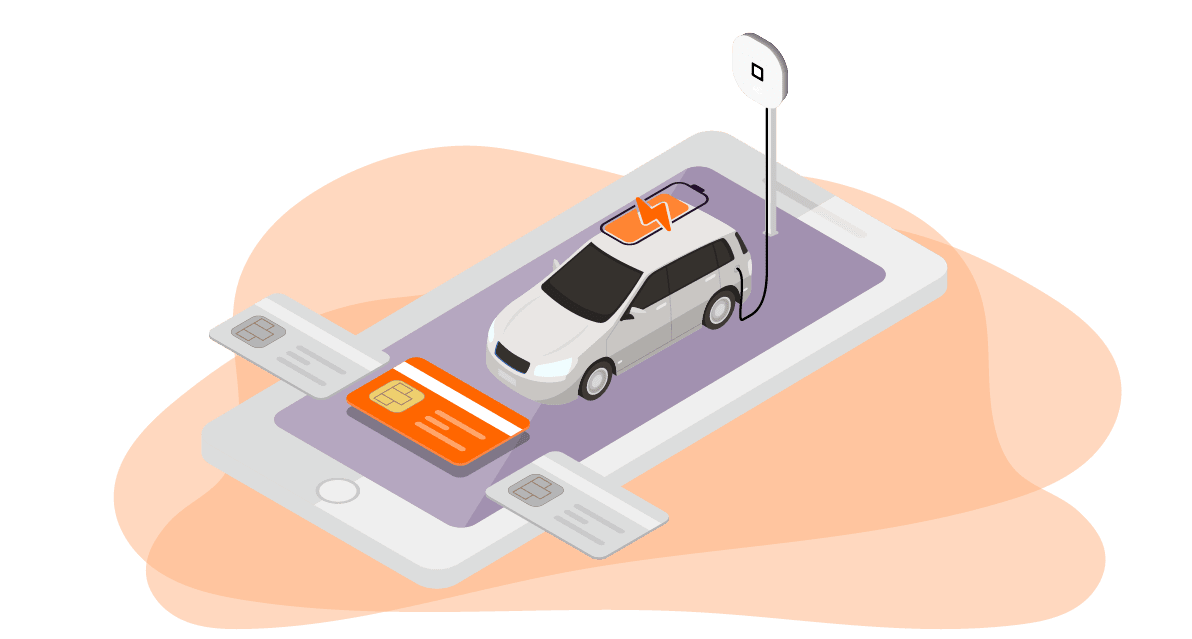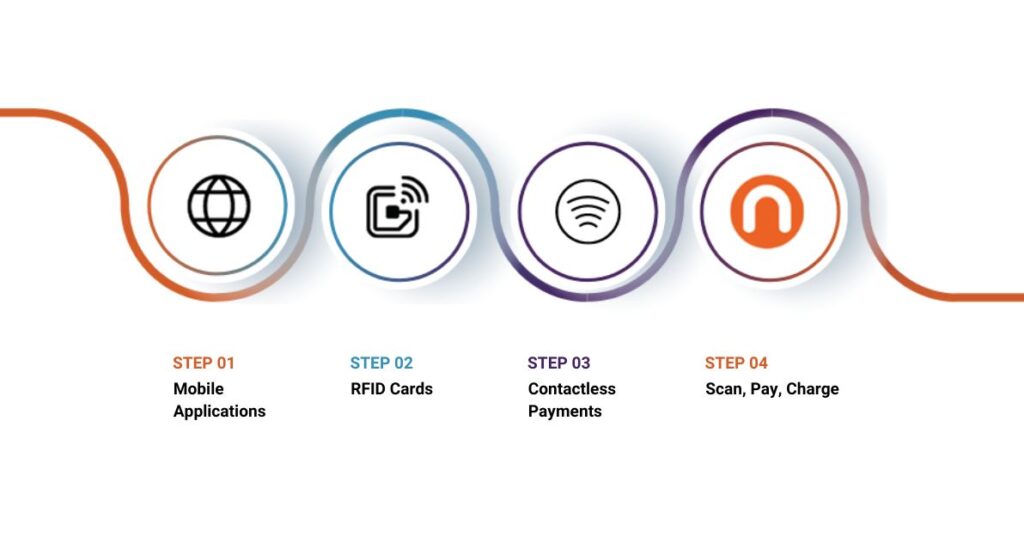Contact Info
2600 Technology Drive, Suite 100
Plano, Texas, 75074
United States
2600 Technology Drive, Suite 100
Plano, Texas, 75074
United States

Last Updated: February 20th, 2023 | EV Charging Management Platform
The rise of EVs has driven the demand for chargers, coinciding with the evolution of payment methods. So how do drivers pay for their charging sessions? Is it just the same way as filling our tanks with gas? Not necessarily. Paying for a charging session has become exceptionally easy and convenient.
Long gone are the days of paying with cash! Instead, customers now have access to a range of options when they pull up to the electrified “pump.” For charging station owners and operators, this is excellent news. Modern, connected EV chargers have the ability to collect revenue and deliver it to the station owner seamlessly. Here are the most common payment methods used by charging stations. It is different from paying for gas, and it might take some time to get used to, but you’ll soon find it worth it.

Many electric vehicle charging networks enable payments through their online services. The company’s app will allow you to set up a payment method and pay at the charger. There’s nothing wrong with paying through an app. Having a centralized place to track your charging and finances is useful. However, requiring it to start the charging session forces customers to download an app they may not need. Additionally, the app must be a component of the specific network in which the charger operates.
Some electric vehicle charging networks opt for payment through a company-specific RFID card. Customers are able to load funds as they see fit and then use those funds to pay for EV charging services. The RFID card enables the driver to access a network-specific charger or network.
RFID cards are also suitable for private charging. For example, fleet operators may use RFID cards as part of their fleet charging solution. The card ensures that charging can only be accessed by authorized vehicles that are part of a fleet. In this situation, the benefit of RFID cards over an app allows flexibility, and the driver doesn’t need to register their smartphone to charge the company vehicle.
Once a charging station is installed, Noodoe generates a list of unique codes and delivers them to the charging site manager. Managers can determine the amount of loaded credit for free or discounted charging and then offer them to residents.
What about the driver’s experience? It’s easy for them too. They scan the code in the Noodoe App to bind the money to their account. That phone then becomes the driver’s prepaid charging card, used to charge up their vehicle until the card runs out of money, then they buy another! Anyone with a charging code can charge, and the manager doesn’t have to track who to charge an extra electrical fee at the end of the month.
RFID cards are also suitable for private charging. For example, fleet operators may use RFID cards as part of their fleet charging solution. The card ensures that charging can only be accessed by authorized vehicles that are part of a fleet. In this situation, the benefit of RFID cards over an app allows flexibility, and the driver doesn’t need to register their smartphone to charge the company vehicle.
Another payment method that has become more familiar these past few years is contactless payment; it’s easy as scanning a QR code. Drivers follow the prompts shown in the web app to pay for their charging sessions. This method doesn’t require any network-specific app or subscription and has the advantage of enabling customers to pay using an e-wallet. Moreover, no hardware – such as a credit card reader – is required to process payments!
Using the Noodoe EV OS management console, the building’s accounting department can download transaction records covering every charging session by the member. Each transaction record will provide the information needed for the end-of-the-month billing.
Noodoe EV OS supports on-demand charging, without the need for subscriptions, apps, or hardware by using contactless payment. Drivers only need a smartphone to access consistent, and convenient EV charging services. They scan the QR code, select a payment method, and start charging instantly. It couldn’t be easier.
For EV charging station owners, this means that there are no cards to track, no apps to manage, and no hardware to keep up. Just the knowledge that everything works as it should with Noodoe!
There are several payment methods available to charging customers, many of which are network specific or solution-based.
Meanwhile, Noodoe strives to offer ease of use and convenience by providing user-centric solutions. While payment methods have evolved from the days of paying cash at a gas station, topping up can still be as easy, straightforward, and convenient as ever.
| Cookie | Duration | Description |
|---|---|---|
| cookielawinfo-checkbox-analytics | 11 months | This cookie is set by GDPR Cookie Consent plugin. The cookie is used to store the user consent for the cookies in the category "Analytics". |
| cookielawinfo-checkbox-functional | 11 months | The cookie is set by GDPR cookie consent to record the user consent for the cookies in the category "Functional". |
| cookielawinfo-checkbox-necessary | 11 months | This cookie is set by GDPR Cookie Consent plugin. The cookies is used to store the user consent for the cookies in the category "Necessary". |
| cookielawinfo-checkbox-others | 11 months | This cookie is set by GDPR Cookie Consent plugin. The cookie is used to store the user consent for the cookies in the category "Other. |
| cookielawinfo-checkbox-performance | 11 months | This cookie is set by GDPR Cookie Consent plugin. The cookie is used to store the user consent for the cookies in the category "Performance". |
| viewed_cookie_policy | 11 months | The cookie is set by the GDPR Cookie Consent plugin and is used to store whether or not user has consented to the use of cookies. It does not store any personal data. |
